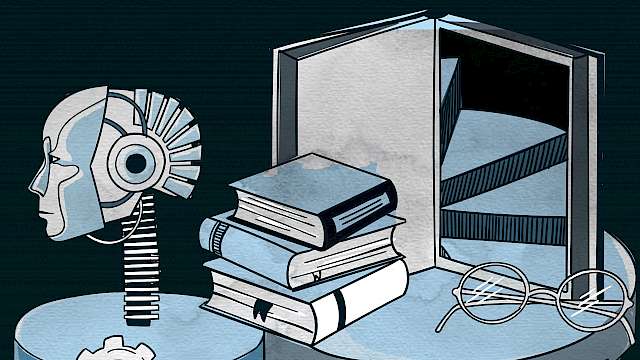Most people see trust as a conscious judgement. We observe another’s actions, apply meaning to these actions, and adjust our trust beliefs accordingly. We’re aware that our conscious beliefs can be compounded by bias. In cross-cultural interactions, for example, trust beliefs can be confounded by conscious ‘second-guessing’ motivated by a desire not to antagonise or appear stereotypical. Ironically, the original first impression is often more accurate than the over-thought assessment.
The mention of first impressions hints at another facet of trust. Not all beliefs are formed consciously. Research shows that social interaction is governed by perceptions and beliefs that occur outside of conscious awareness. This includes trust beliefs, which are heavily shaped by subtle signals in our interpersonal behaviour. These signals are routinely detected, but they can fail to reach consciousness, or are overruled by conscious deliberation. This means that a person’s natural capacity to interpret relevant social signals is often not utilised in their subsequent decisions and actions.
Several lines of research illustrate this point. Studies of peripheral vision show that people can detect threat without conscious awareness (i.e., fight or flight). DARPA capitalised on this evidence by building a military helmet that detects the brain’s recognition of threat and brings this signal to the wearer’s attention via haptic feedback. Equally, people’s trust in another can be unknowingly shaped by altering the trustee’s eye gaze. And, delaying the speed or type of nonverbal mimicry (movements that coincide with the timing and rhythm of a partner’s movements) can render a viewer to distrust another.
Nonverbal behaviours
Inherent in these studies is the notion that automatic trust beliefs can be detected by subtle changes in the trustor’s nonverbal behaviour. There are many parallels here with DARPA’s work on physical risk detection through the measurement of brainwave activity. Instead, here we are interested in social risk detection (e.g., is the person trustworthy?), through the measurement of nonverbal behaviour. Data from two studies show what is possible.
Using methods from the film industry for capturing body movement—think of films like Avatar and Ted—we examined people’s movements as they interviewed six citizens. Our citizens were actors who varied how much they cooperated with the interviewer and how much information they held. Some held no information of interest. Others held information that was either factual or false. Would the interviewer show different movement when interacting with the least trustworthy citizen (i.e., the person who had information, but was uncooperative)?
The results from sensors showed they do. More movement and more erratic movement betrayed our interviewers’ unconscious lack of trust. Ostensibly, they were working harder to encourage an interaction with the citizen, even though they may not have realised it. Using movement data alone, it was possible to differentiate cooperative and non-cooperative citizens 22% better than guessing. This is the first hint that automatic trust beliefs, which develop rapidly, may be detectable through behaviour.
Verbal behaviours
Research has identified subtle trust signals in verbal behaviour too. This was perhaps first brought to life by Sandy Pentland’s research, reported in Honest Signals, that found correlations in voice stripped of meaning (the sound retained but the vocalised words removed) can predict outcomes like team performance and negotiation outcome, which both depend on trust. Others have developed a ‘trust dictionary’ that claims to access subtle behavioural markers of a trustworthy speaker when applied to texts such as political speeches.
The recent PhD work of Steven Nicholson serves to illustrate what verbal signals can do. Across four studies he revealed that online dyads and online groups report greater trust when members are mimicked during early ‘forming’ stages and see more positive emotion language in later problem-solving tasks. However, this was reciprocal. While Steven could increase trust by injecting these behaviours, he also found that group members primed to believe their group was either high or low in trustworthiness would produce more positive emotion words and language mimicry.
People’s trust in another can be unknowingly shaped by altering the trustee’s eye gaze.
His final study investigated online interactions in a virtual community focused on discussing credit card fraud (i.e. a criminal online group). When law enforcement intervened in the forum to disrupt activity, the group’s language mimicry dropped significantly (in fact, Steven made this prediction before he was told when the disruption occurred). The intervention appeared to work, since the language change suggested a decrease in trust. But, after a period of two weeks, the mimicry recovered to the same level as before the intervention. It suggests the disruption impacted group trust for approximately two weeks, after which business returned to normal.
Trust signals may be a unique and useful form of intelligence for security, if we can find ways to harness them effectively and ethically.
Stacey Conchie is a professor in psychology at Lancaster University and Director of CREST.
Paul Taylor is professor of psychology at Lancaster University and the University of Twente.
Read more
- Adolphs, R. (2009). The social brain: Neural basis of social knowledge. Annual Review of Psychology, 60, 693-716. https://bit.ly/3IdlaFH
- Bargh, J. A., & Ferguson, M. J. (2000). Beyond behaviorism: On the automaticity of higher mental processes. Psychological Bulletin, 126, 925-945. https://bit.ly/3Ap0RDi
- Bayliss, A. P., & Tipper, S. P. (2006). Predictive eye gaze cues and personality judgments: Should eye trust you? Psychological Science, 17, 514-520. https://bit.ly/3IhANMr
- Donohue, W. A., & Druckman, D. (2008). Message framing surrounding the Oslo I Accords. Journal of Conflict Resolution, 53, 119-145. https://bit.ly/3ONvF55
- Leander, N. P., Chartrand, T. L., & Bargh, J. A. (2012). You give me the chills: Embodies reactions to inappropriate amounts of behavioral mimicry. Psychological Science, 23, 772-779. https://bit.ly/3bVeXSR
- Maatter, M., Truong, K. P., & Heylen, D. (2010) How turn-taking strategies influence users’ impressions of an agent. In IVA (Ed.), International conference on intelligent virtual agents. Philadelphia, PA, USA.
- Nicholson, S. (2017). The relevant and reliable language theory: developing a language measure of trust for online groups. Lancaster University. https://bit.ly/3ylVhyP
- Olivola, C. Y., & Todorov, A. (2010). Elected in 100 milliseconds: Appearance based inferences and voting. Journal of Nonverbal Behavior, 34, 83-110. https://bit.ly/3uqH2aS
- Pentland, A. (2008). Honest signals: How they shape our world. The MIT Press.
- Porter, S. et al. (2010). Dangerous decisions: The impact of first impressions of trustworthiness. Psychology, Crime and Law, 16, 477-491. https://bit.ly/3agjZIV
Copyright Information
Image credit: shurkin_son | stock.adobe.com






